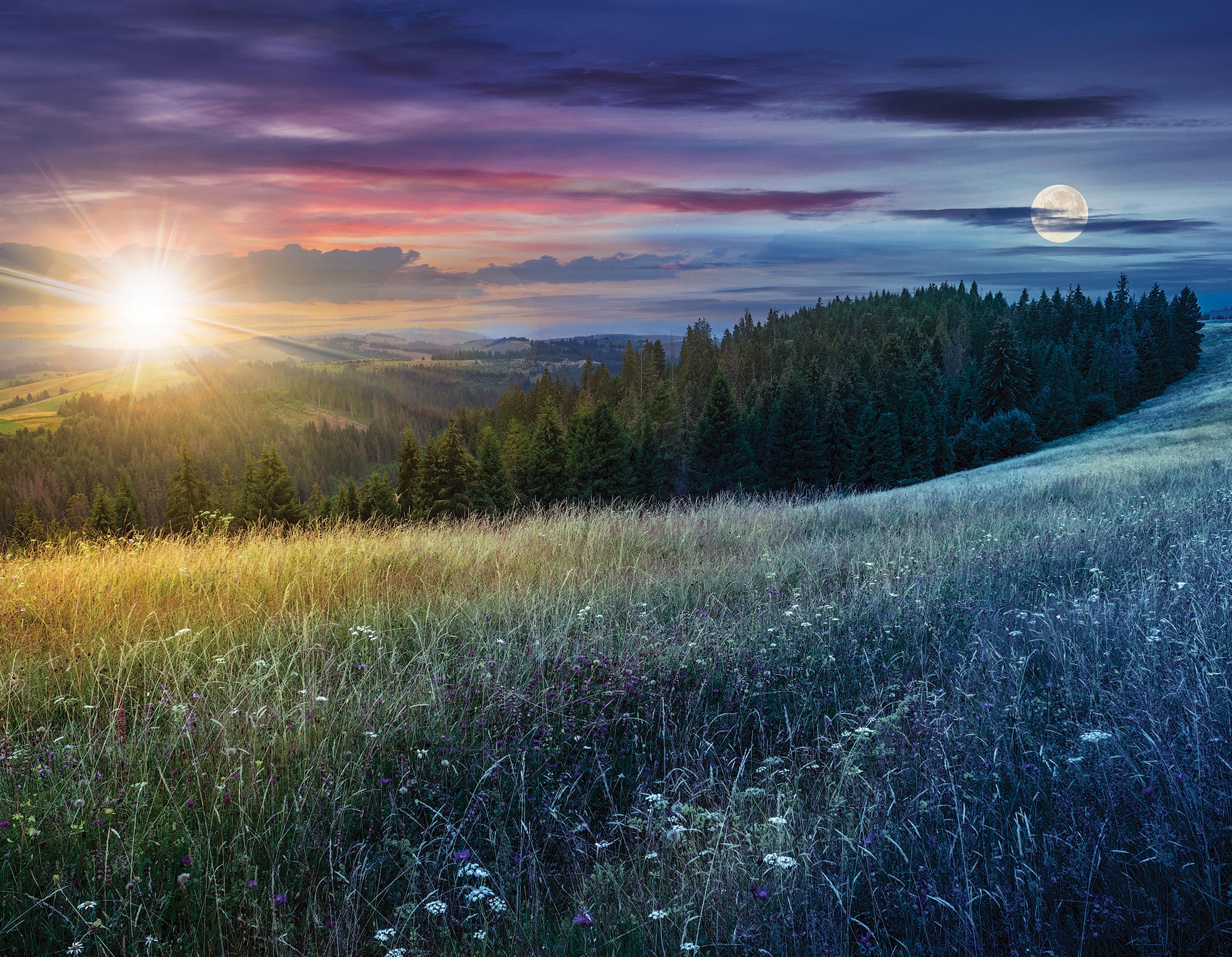The Traditional Calendar Makes No Sense for Hikers. But This One Does.

'Illustration by Giovanni Corrado Leone; Photos by Mike Pellini / Alamy Stock Photo'
According to our traditional calendar, March 20 is the first day of spring this year. We’ll let the weather forecasters keep thinking that. But we backpackers know that what matters most is when days start getting longer, and that happens weeks before the official spring equinox rolls around. While others have been waiting for the “seasons” to change, we’ve been milking the extra light.
Consider this: Winter may be the off-season of hiking, and, sure, it’s cold. But with the right layering system, should it matter? In the Northern hemisphere, half of our shortest days have already flown by in fall. By December 21, days are actually getting longer. Come February—well before spring starts—we already have 10 hours of daylight, meaning that, if we can handle the cold, we can eye bigger weekend targets without worrying about alpine starts.
That carefree attitude can carry us into summer, but come June 20, our days are getting shorter. In November, if we’re not at camp by 6 p.m., we’re hiking in the dark, no matter how idyllic the weather.
Whoever decided to split up the calendar the old way clearly wasn’t thinking about how much ground he could cover between sunrise and sunset or which time of year would be best for kickass star photography. It’s time for those of us who venture into the wild world where sunlight rules to overlay our own, more meaningful calendar.
We won’t be the first to think beyond the Big Four. Most equatorial regions have only two seasons—dry and wet—because that’s the division that’s useful to them. The Hindu calendar has six, adding pre-winter and monsoon to the standards. The Celts divided the year into eight parts.
I say we go by the daylight and declare February 4 the start of The Brightening, that glorious season in which you can finally plan a trip without a triple set of headlamp batteries. Let us celebrate May 5 as the first day of The Shining, aka the season of long days fit for big miles. Take August 7, the onset of The Dimming, as your reminder to seize every weekend. And perhaps plan a moonlit hike on November 7, the day we enter The Darkening.
I’m not saying you need to give up the old seasons entirely. They have their charm. But the next time someone gets psyched on the first day of spring, let them know you’ve been celebrating The Brightening on apres-work hikes for 6 weeks already. Because the sooner we spread the word, the sooner everyone can start seeing the light.